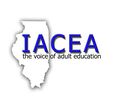|
Bill Swiderski, Joliet Junior College
This is the second in a series of posts featuring Stanford University's free Reading Like a Historian resource page. Part 1 can be read here. In this blog, I would like to give an example of how to organize the choice of lessons to present to students. I look for themes that span across different lessons. It will take a little time to discover what might be found in the content of the lessons, but I am sure that there are many possibilities. The first one that I found was on the issue of slavery. The lesson on the Declaration of Independence gave the information about the main document itself, as well as the grievances listed by Jefferson against the King of England. It points out that in the original list, one of the grievances was the use of slavery by the King and the strong condemnation of the practice. However, in the final document, that item was not included and thus began the approval of the practice by omission. My student activity was to match main ideas with the grievances and to discuss the dangers in leaving that out. The theme continued in the writing of the Constitution lesson where different arguments for not abolishing slavery in the constitution were delivered during the debate. I match main ideas in these arguments for the students to identify. We discuss how these excuses, though inappropriate for today, were the prevailing way of thinking at that time. I also continue the theme in the Abraham Lincoln lesson, which goes into the politics of the Emancipation Proclamation. They read some of the comments of Lincoln during the debate with Stephen Douglas for the Senate position and letters that Lincoln wrote which show his inner thoughts about the subject, which would be considered bigoted by today’s standards. I constantly remind the students about the previous lessons. We try to draw conclusions about what effect the delay in dealing with the problem had and how attitudes today have and have not changed. With the large number of lessons available for free on Stanford's Reading Like a Historian website, there are many other themes that can be found. If you're using this resource, what other themes have you found? What themes would you like to build lessons around? Share your ideas in the comments!
0 Comments
Marcia Luptak, Elgin Community College
Census Resources (Click "Read More" below for Census facts and figures) Presentations: https://national-coalition-literacy.org/research/the-2020-census/ncl-census-presentations/ Information, fact sheets, talking points, teaching activities and resources, videos: https://www.census.gov/programs-surveys/sis/2020census/2020-resources.html Information and classroom resources (including lesson plans for math, leveled ESL, reading): https://nelrc.org/stand-up-and-be-counted/census2020/ If you would have asked me about the census a year ago, I would have said, “Yeah, I know it’s coming,” and I could have given you a few facts and figures in a disinterested way. However, several events occurred over the past year that have completely changed my attitude. The first event happened last March when I was talking to a colleague, John, about the possibility of doing a learning community between his college speech class (CMS101) and our college transitions ESL class. He and I had taught together in a learning community, so I was familiar with his style and thought it would be a great fit. I knew that John was big in service learning with his classes and had even formed a consulting group for students on campus, Spartan Consulting. During this initial conversation, I was hoping he would suggest integrating a service learning component. When he did, I jumped at the opportunity. The adventure began...(click "Read More" to continue) |
EditorsWant to submit an article for the IACEA Blog? Send your 300-500 word article to: Archives
May 2021
Category
All
|

 RSS Feed
RSS Feed